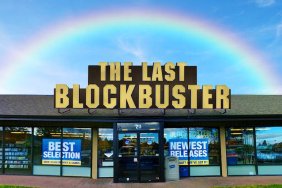Blockbuster Video, that onetime mad corporate champion of all things home video, announced today that they are going to be closing their final 300 brick-and-mortar stores in 2014. I am both thrilled by the news, and deeply, deeply saddened. I find myself in a Vonnegut-like state of mind, willing to shrug my shoulders, and merely utter “So it goes,” as I turn my back and saunter blindly into the future. There is a lot to celebrate in the death of the corporate behemoth, but there is also much more to lament.
Blockbuster Video represents a lot to me. When I was first visiting video stores about 25 years ago, the landscape was dominated by personally-curated mom-and-pop shops, usually employed by the now-clichéd snotty video store clerk who clearly knew a lot more about movies than you did, but didn’t always aid you in your quest if what you were seeking seemed gauche. Most of the time, the clerks I talked to (probably because I was so young) would talk me out of renting The Goonies for the tenth time, and point me toward something a little more obscure. It was through one of these clerks that I discovered the “Cult” section at 20/20 Video on Wilshire and 12th in Santa Monica, CA, and started watching stuff like Eraserhead.
When Blockbuster Videos started opening, they were seen as a threat to just about every one of these mom-and-pop stores. They, like Starbucks and Borders Books, seemed to actively seek the closure of nearby competition. They would open up much larger stores closeby to their smaller brethren, in the hopes of siphoning business. They claimed to have a larger selection, which they didn’t. What they could legitimately boast was that they carried more VHS taps and DVDs of the latest hits, ensuring that the most sought-after movies would be available. My 20/20 Video only had about three copies of Terminator 2. Blockbuster had about 40. Blockbuster was clean, sterile, and had no personality. They were the very face of corporate evil.
Blockbuster would not have seemed so insidious if they were also a superior video store, but they weren’t. They rarely had an actively knowledgeable staff, and their selection was not comparable to your average strip-mall video rental store. This maddened real-life video store rats like myself, who knew a good store when he saw one. We rats resented the success of the inferior. This was happening with Borders and Wal-Mart at the same time. Little shops were being stomped on by the big kids.
Over the years, Blockbuster tried to diversify with video game rentals and even Blockbuster Music, a music shop with similar-style selection, staff, and evil ubiquity. They ruled all physical media with an iron fist, and those of us who were always looking for the interesting and obscure sneered openly, shaking our fists at the bully.
But after 25 years, Blockbuster is now withering on the vine. The new big kid on the block is stomping on the old bully, who has aged out of the marketplace. The new big kid is not even a video store. It’s a group of online movie streaming services. Physical media is largely seen as a dated technology, and people would rather have the ease of access that reaches into their homes on a moment’s notice, than leave the house, pick up a physical copy of the movie they want, and then return it a few days later.

But the streaming service that finally slammed the old bully into the coffin also managed to sound the death knell for all video stores. Blockbuster is dying, and an old foe seems to have finally been defeated. But they are actually just the last victim in a trend that killed off most every video store.
This is where we begin to feel ambivalence. Sure, we all wanted Blockbuster dead, and they have always been one of the inferior video stores, but we realize that we had to lose almost all of our video stores to get it this way. It would be like seeing your most hated schoolyard bully tooling through the aisles of your local toy store, and blowing up the entire shop to get him. Not only is that overkill, but you also lost your favorite toy store in the process. Sorry, was that a strange analogy?
I have, in recent years, affected an pacifist attitude toward all video stores. Good or bad, I feel they are all sacred, because they represent such an important phase in my life, and such a vital means to discover the classics of the cinema world. The people who work at video stores are the keepers of the keys to the kingdom. They have the ability to change your life with a well-placed recommendation. With something like Netflix, those keys have been tossed directly to you. Only the store you’re going through is not organized in a way you understand, they don’t have what you’re looking for, and it’s hard to search for specific things.

Netflix is the new bully. They are like a well-stocked Blockbuster that is constantly understaffed, and is constantly losing stock, as major studios demand their tapes be mailed back to them. A stat for you to ponder: Netflix has over 3,000 titles to choose from on any given night. My local video stores, CineFile Video and Vidiots, which are still vital despite the struggle, have over 40,000 titles apiece. Local video stores are as big as 13 and ⅓ Netflixes.
So a hated teen icon is dead. But so is everyone else. Part of me wants to dance on the grave of the store that helped kill off video stores. But I’m a single celebrant in a graveyard full of friends. The wars were fought and everyone died. Video stores were important, dammit. Now they’re just old friends of mine. Friends of mine who died.
The evil has been quelled. Now we must weep for a bygone era.
Witney Seibold is a featured contributor on the CraveOnline Film Channel, co-host of The B-Movies Podcast. You can read his weekly articles Trolling, Free Film School and The Series Project, and follow him on “Twitter” at @WitneySeibold, where he is slowly losing his mind.








